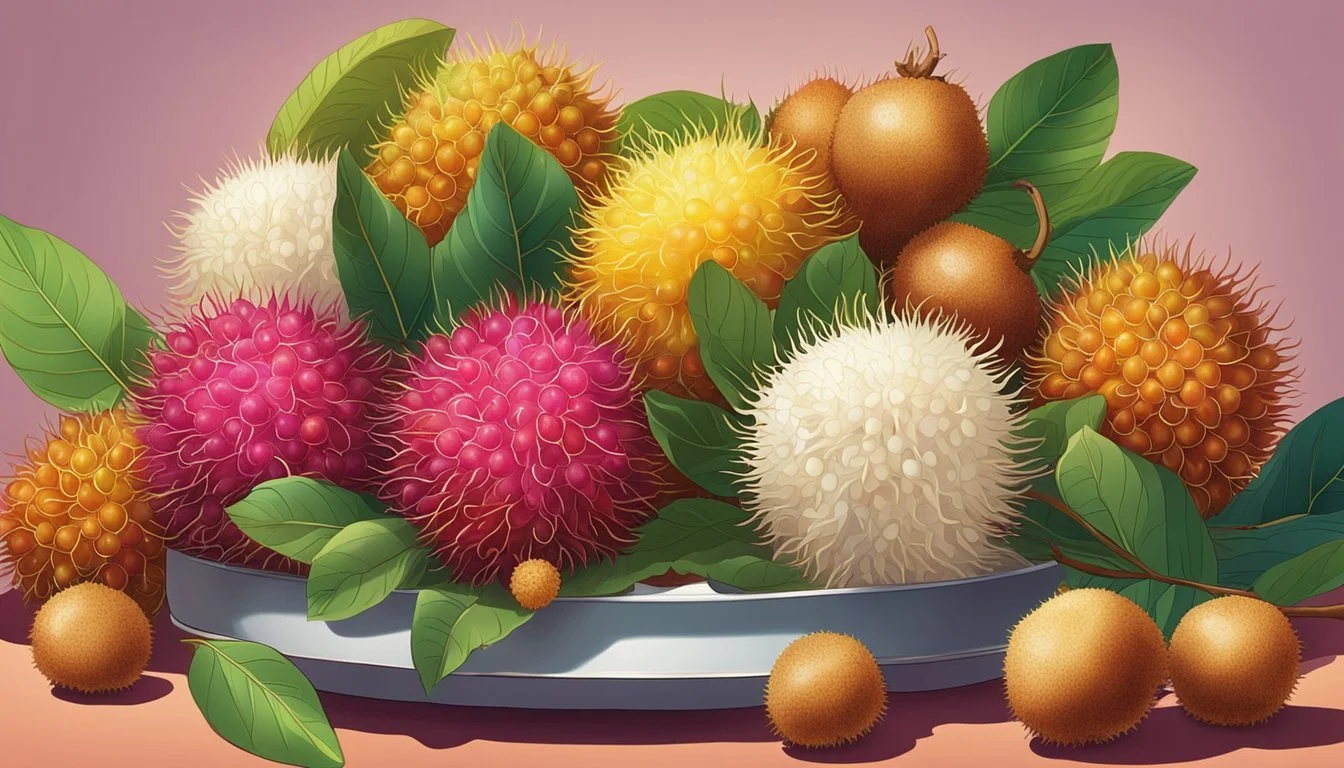10 Delicious Lychee Substitutes to Elevate Your Recipes
Best Alternatives for Recipes
Lychee is a fragrant tropical fruit loved for its juicy sweetness, delicate floral notes, and exotic flavor. Originating in Southeast Asia and popular in East Asian cuisine, it’s often enjoyed fresh, in canned versions, or transformed into lychee juice, lychee syrup, and lychee cocktails.
But what if you can’t find lychee at your local market? Don’t worry, there are plenty of flavorful substitutes that capture its essence. In this guide, we’ll explore 10 delicious lychee substitutes to elevate your drinks, fruit salads, desserts, and baked goods while still delivering that unique tropical flair.
Why Use a Lychee Substitute?
Sometimes fresh ones are unavailable due to seasonality or shipping limitations. Other times, a canned variety or syrup might not give the authentic flavor you’re craving. A substitute ensures:
Your recipe maintains its fragrant and delicate flavor.
You can still enjoy the health benefits like vitamin C from real fruit.
Drinks, desserts, and summer recipes stay refreshing and delicious.
Lychee Substitute Options
Let’s review each substitute that brings its own charm to recipes requiring lychee.
1. Longan – The Closest Match
Longan is a closely related fruit from the same family as lychee.
It has a translucent juicy pulp with a floral flavor that resembles lychee almost perfectly.
Works well in fruit salads, lychee cocktails, and tea blends.
Longan has a slightly more musky and less sweet profile but retains the delicate fruity flavor.
Best for: Drinks, desserts, and authentic East Asian recipes.
2. Rambutan – Exotic and Fragrant
Rambutan has spiky skin but contains a fragrant, juicy pulp similar to lychee.
Offers floral notes and a slightly creamier texture.
When blended in a smoothie or mixed into summer drinks, it gives an excellent tropical flair.
Best for: Lychee martini, cocktails, and baked goods.
3. Mango – Sweet Tropical Goodness
Mango provides a sweet and fruity taste, though less floral than lychee.
It works well when you want a real fruit with a juicy and fragrant profile.
A ripe mango adds richness to desserts, fruit salads, and drinks.
Best for: Lychee syrup replacement in blender drinks and fruity cocktails.
4. Pineapple – Tart and Vibrant
Pineapple’s tart flavor balances sweetness with acidity.
Though it lacks lychee’s delicate floral notes, it brings brightness to recipes.
Can be cooked into syrups, stirred into summer drinks, or used in desserts.
Best for: Simple syrup infusions and tropical fruit salads.
5. Strawberry – Fruity with a Delicate Edge
Strawberries have a sweet yet tart profile.
While not floral, they can blend well in recipes needing juicy fruits.
In cocktails and salads, strawberries mimic lychee’s balance of fragrant sweetness.
Best for: Baked goods, fruit blends, and cocktails.
6. Coconut – Creamy Tropical Flair
Fresh coconut offers a fragrant tropical flavor with mild sweetness.
The texture differs from lychee, but coconut adds a delicate tropical flair.
Coconut water or coconut syrup also works as a lychee mixture substitute in drinks.
Best for: Lychee martini twists, smoothies, and tropical desserts.
7. Grapes – Simple and Readily Available
Fresh grapes bring sweet, juicy flavor with a real fruit touch.
White grapes have a cleaner taste, closer to lychee flavor.
Easy to slice with a small pairing knife and toss into salads or drinks.
Best for: Quick swaps in fruit salads and cocktails.
8. Pear – Mild and Delicate
Pears provide a delicate flavor with subtle sweetness.
Their crisp, juicy texture mimics lychee’s refreshing bite.
Works well in summer drinks and fruit-based desserts.
Best for: Desserts and recipes that need a light fragrant fruit.
9. Guava – Exotic with Vitamin C Boost
Guava has a fragrant tropical flavor and plenty of vitamin C.
Adds a slightly tart yet sweet twist to recipes.
When blended, guava makes a great lychee juice substitute.
Best for: Cocktails, smoothies, and tea blends.
10. Passion Fruit – Tangy and Tropical
Passion fruit has a fragrant aroma with a tart and sweet flavor.
Though more acidic than lychee, it pairs beautifully in summer drinks.
Its vibrant pulp adds visual appeal to recipes.
Best for: Lychee cocktails and baked goods.
Using Substitutes in Recipes
Fresh Lychee vs. Substitutes
When you have fresh lychee, it’s always the top choice. But when using substitutes:
Go for fruits with juicy pulp like longan or rambutan for authentic flavor.
Use mango or pineapple when you want a tropical flair in drinks.
Pears and grapes are perfect if you need fresh ones that are easy to find.
Canned Lychees and Alternatives
Sometimes, a canned variety works better due to long shelf life. If unavailable:
Try canned longan or canned rambutan.
Use fruits stored in syrup for similar sweetness.
Always store leftovers in an airtight container to preserve freshness.
Lychee Syrup Substitutes
If your recipe calls for lychee syrup but you don’t have any:
Make a simple syrup with sugar and tropical fruits like pineapple or mango.
Blend the mixture, strain all the pulp, and refrigerate.
Store in an airtight container for a long shelf life.
Lychee Juice Alternatives
Lychee juice is often used in cocktails and desserts. Substitutes include:
Guava juice for a tropical twist.
Pear juice for a delicate flavor.
Coconut water for light fragrant notes.
Lychee in Cocktails
Lychee Martini
A lychee martini is a classic, made with lychee syrup or canned lychees. Substitutes include:
Rambutan or longan puree for similar floral flavor.
Mango or guava for a sweeter tropical edge.
Lychee Cocktails
For lychee cocktails in general:
Blend fruits with simple syrup.
Stir with vodka, rum, or gin.
Garnish with fresh fruit for authentic flavor.
Substitutes in Baked Goods
For cakes, tarts, and muffins, replace lychee with:
Strawberries for a fruity flavor.
Pears for delicate floral notes.
Mango for tropical richness.
Substitutes in Salads and Desserts
Fruit salads: Use grapes, strawberries, or longan.
Desserts: Coconut, mango, or guava adds a tropical twist.
Health Benefits of Substitutes
Lychee is known for its vitamin C, antioxidants, and hydration benefits. Many substitutes like guava, strawberries, and pineapple provide similar health benefits while boosting your recipes with natural sweetness.
Tips for Using Substitutes
Always taste the substitute before adding to ensure the flavor matches the recipe.
For cocktails, balance sweetness with simple syrup or citrus.
For baked goods, chop fruits finely and remove all the pulp seeds.
Keep leftovers in an airtight container to maintain shelf life.
Conclusion
Finding the perfect lychee substitute doesn’t have to be complicated. Whether you choose longan, rambutan, or more common fruits like mango and grapes, each option brings a delicious, fruity, and fragrant flavor to your recipes. From lychee martinis and cocktails to desserts and fruit salads, these alternatives ensure your dishes maintain their tropical flair.





